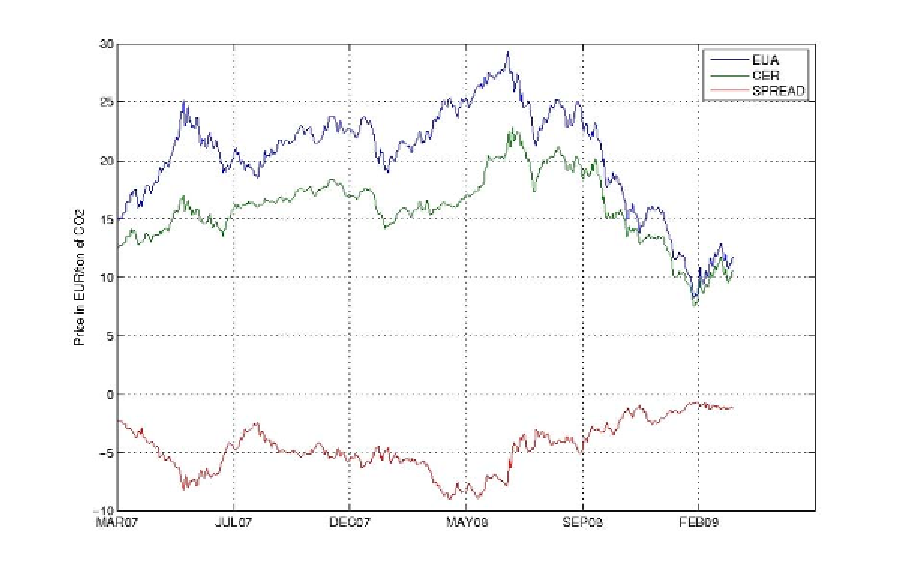Environmental Engineering Reference
In-Depth Information
Figure 1. EUA, CER, and EUA-CER Spread Prices. Source: European Climate Exchange
Idiosyncratic Risks
CER contracts. We may also observe that the
CER-EUA spread varies in the range of €-1.5 on
20 November 2008, and has been as high as €-9
during 2008. A broad spread means that there
is a high risk premium in the purchase of CERs
compared to EUAs. At the same time, it means
that there are large arbitrage opportunities to use
CERs for compliance within the EU ETS, since
they are a lot cheaper than EUAs. A narrow CER-
EUA spread could also mean lower demand for
CERs, which may discourage project developers
from investing in cleaner energy facilities.
This analysis brings us to investigate the re-
spective risk factors of CERs and EUAs.
1. Risk factors specific to CDM credits
CDM projects add value to an investment through
CER revenues. CDM projects are registered by
the CDM Executive Board, and displayed in the
CDM pipeline
4
along the several steps from reg-
istration to validation. One particularly striking
source of uncertainty concerning the validation of
CDM projects lies in the so-called “additionality”
of GHG emissions reductions claimed; that is,
project developers need to demonstrate the GHG
emissions reductions claimed would not have been
achieved in the absence of the project. According
to the World Bank (2008), the CDM projects'
distribution is skewed toward a small group of
developing host countries: five countries (China,
India, Brazil, Mexico, South Korea) concentrate
around 80% of the total project pipeline. These
RISK FACTORS
First, we examine the idiosyncratic risk factors
for each emissions market.

